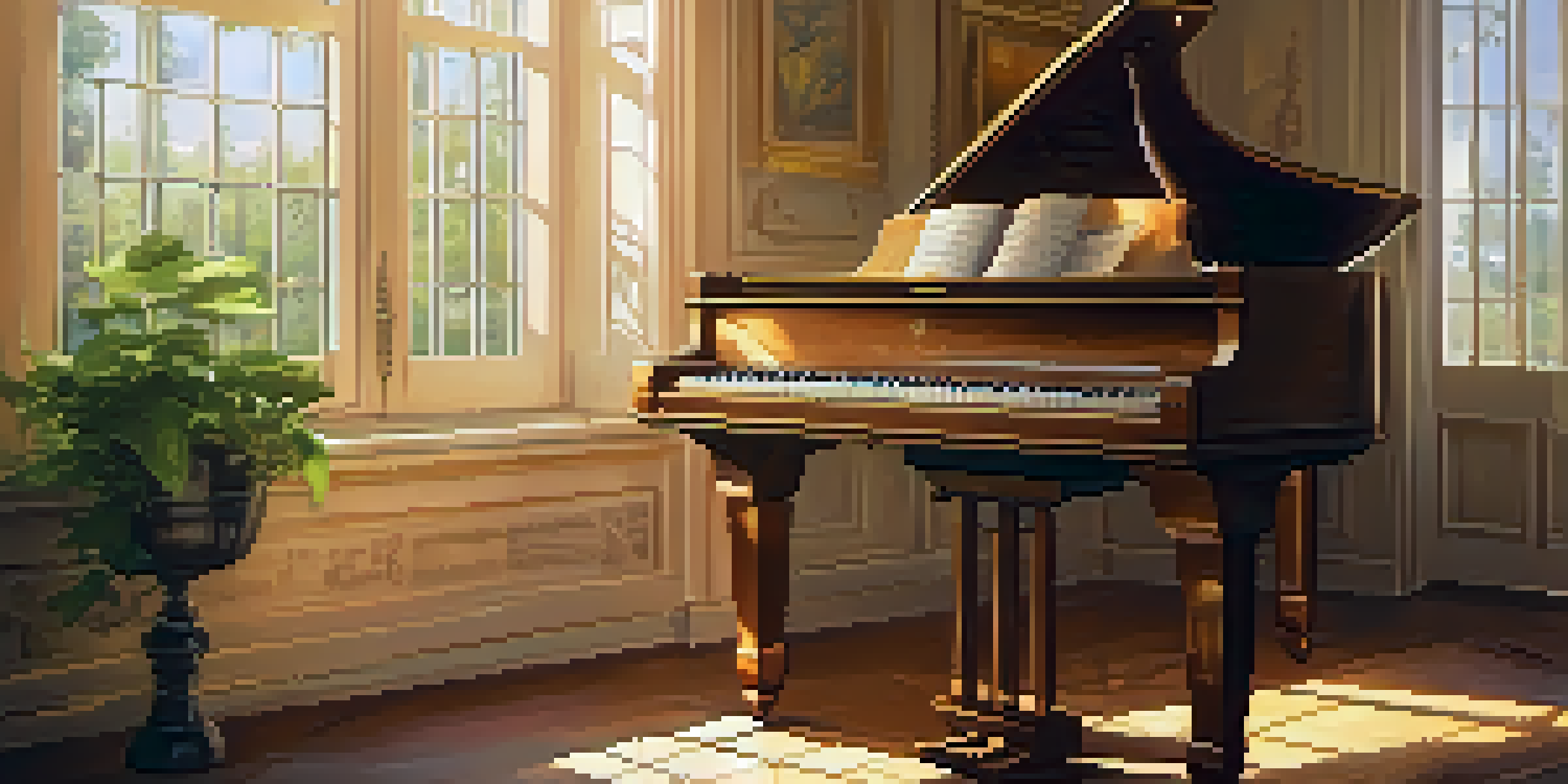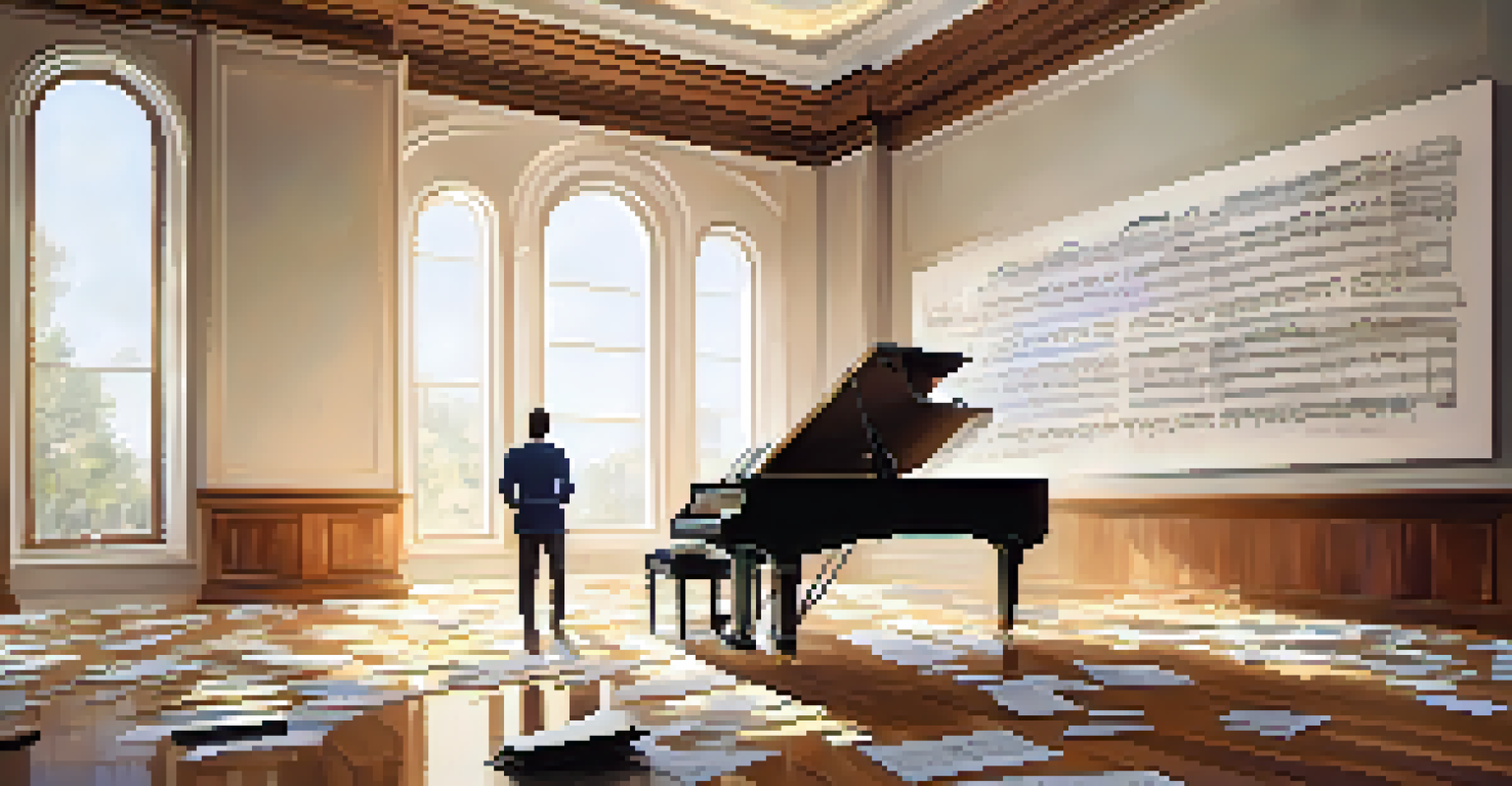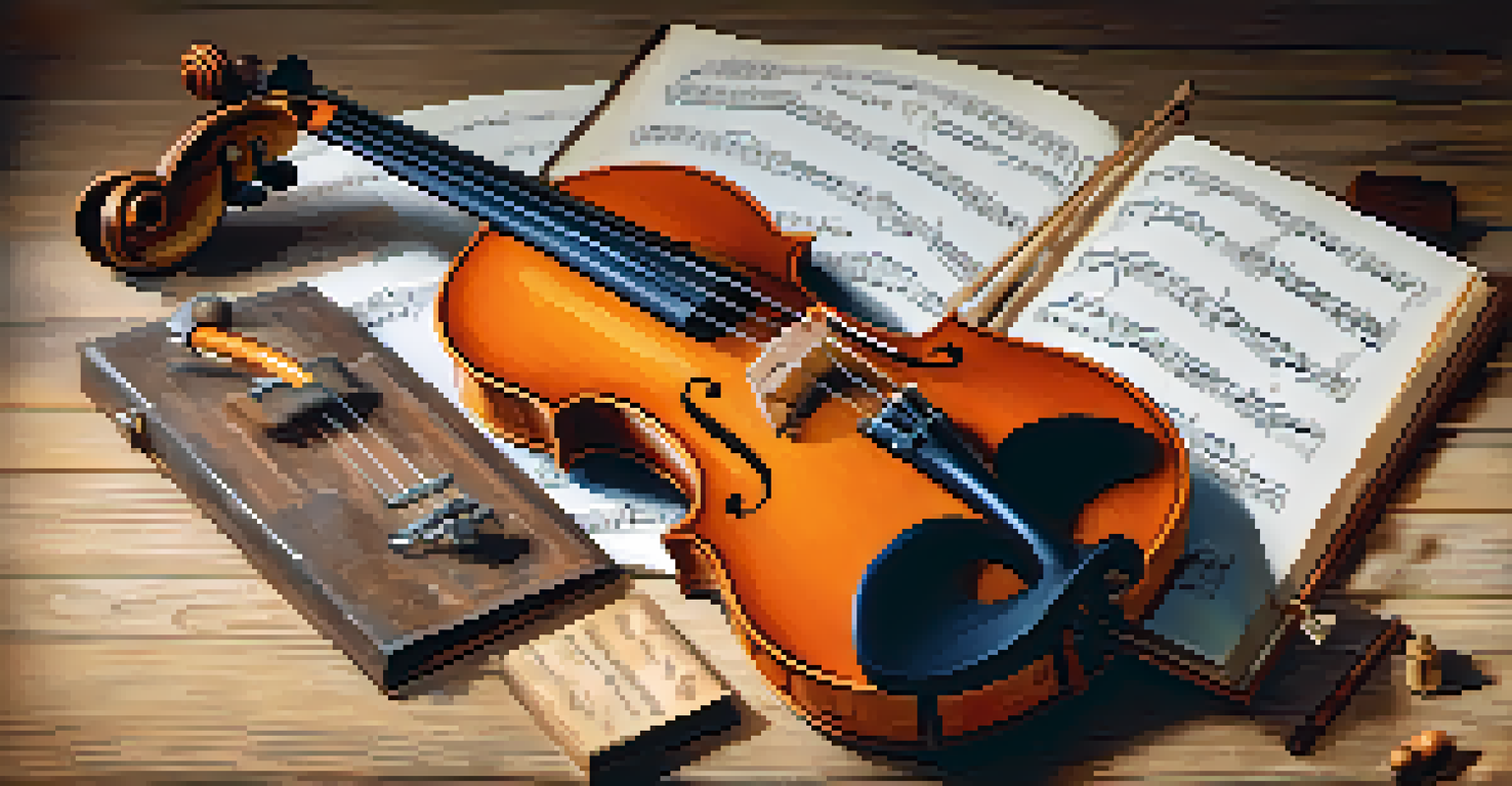Reading Sheet Music: Tips for Beginners and Advanced Players

Understanding the Basics of Sheet Music Notation
Sheet music is essentially a written representation of music. It uses symbols to convey pitch, rhythm, and dynamics, making it crucial for musicians to interpret compositions accurately. Just like reading a book, understanding the language of music notation allows you to unlock a wealth of creative expression.
Music is an outburst of the soul.
At its core, sheet music consists of staff lines, notes, and various markings. The staff comprises five horizontal lines and four spaces, each representing different pitches. Familiarizing yourself with these fundamentals is the first step toward reading music fluently.
Additionally, it helps to understand the key signature, which indicates the scale used in the piece. This foundational knowledge is like learning the alphabet before writing your first sentence; it sets the stage for more complex musical ideas.
Identifying Notes and Their Values
In music, notes are the building blocks. Each note represents a specific pitch and duration, which is essential for playing accurately. For beginners, associating each note with its corresponding position on the staff can feel overwhelming, but practice makes perfect.

Notes come in various shapes, each indicating a different duration. For example, whole notes are open and last for four beats, while quarter notes are filled in and last for one beat. Understanding these values is crucial for maintaining rhythm and flow in your music.
Mastering Music Notation Basics
Understanding the fundamentals of sheet music notation is essential for musicians to express creativity and interpret compositions accurately.
Using mnemonic devices can help you remember the note names on the lines and spaces of the staff. For instance, 'Every Good Boy Deserves Fudge' can help recall the notes E, G, B, D, and F on the lines. This playful approach can make learning more enjoyable and less daunting.
Using Rhythm to Enhance Your Playing
Rhythm is just as important as pitch when it comes to music. It gives structure and life to your playing, allowing you to express emotions effectively. Beginners often focus solely on hitting the right notes, but incorporating rhythm can elevate their performance.
Learning music is a journey, not a destination.
To grasp rhythm, familiarize yourself with different note values and rests. Rests indicate silence and are just as crucial as the notes themselves. Practicing with a metronome can help you internalize rhythmic patterns and improve your timing.
As you advance, explore more complex rhythms, such as syncopation and polyrhythms. These techniques can add depth to your music, much like adding color to a canvas. Experimenting with different rhythms will not only enhance your skills but also make playing more enjoyable.
Practice Techniques for Effective Learning
Effective practice is key to mastering sheet music. For beginners, starting with short, manageable sections allows for focused learning without feeling overwhelmed. Breaking pieces down into smaller chunks makes it easier to absorb and retain information.
Additionally, consider using slow practice techniques. Playing slowly ensures that you’re hitting the right notes and maintaining proper rhythm. Gradually increase the speed as you gain confidence, much like learning to ride a bike - you wouldn’t start speeding down a hill right away.
Rhythm Enhances Musical Expression
Incorporating rhythm into your playing not only maintains structure but also elevates emotional expression in music.
Recording your practice sessions can provide valuable feedback. Listening to your performances helps identify areas for improvement and track your progress over time. This reflection can be incredibly motivating as you witness your growth.
Reading Ahead: Sight Reading Techniques
Sight reading is the ability to play a piece of music at first glance. This skill is invaluable for musicians, allowing them to learn new pieces quickly. Developing your sight-reading abilities requires practice and a few effective techniques.
One effective approach is to scan the music before playing. Look for key signatures, time signatures, and any tricky sections. This pre-reading strategy prepares your mind for what’s to come, just like glancing over a chapter before diving into the details.
Another technique is to practice with simple pieces and gradually increase complexity. The more you expose yourself to different styles and notations, the more comfortable you’ll become. It’s a journey, but every step forward builds your confidence.
Utilizing Technology for Music Learning
In today's digital age, technology can be a powerful ally in learning to read sheet music. Various apps and software offer interactive tools that make the learning process engaging and effective. From virtual keyboards to music theory games, these resources cater to diverse learning styles.
You can also find online tutorials and video lessons that break down complex concepts. These visual aids can clarify ideas that might be difficult to grasp in text form. Watching someone else demonstrate can be a game-changer for many learners.
Practice Techniques for Progress
Effective practice methods, such as breaking pieces into smaller sections and using slow practice, are crucial for mastering sheet music.
Finally, consider joining online communities or forums. Sharing experiences with fellow musicians can provide support, motivation, and new insights. Learning from others can enrich your journey and make it feel less solitary.
Exploring Different Genres and Styles
Diving into various musical genres can significantly enhance your sheet music reading skills. Each genre offers unique rhythms, melodies, and harmonic structures, broadening your musical vocabulary. Whether it’s classical, jazz, or pop, exploring different styles keeps your practice fresh and exciting.
Additionally, playing pieces from various genres can improve your adaptability. Each style has its own nuances, which can challenge you to develop new techniques and approaches. This versatility is invaluable as you progress as a musician and can lead to more creative expression.

Moreover, embracing different musical styles allows you to discover new favorite pieces. Each genre tells a story and evokes emotions, making your practice sessions more engaging. Finding joy in music is perhaps the most significant takeaway of all.